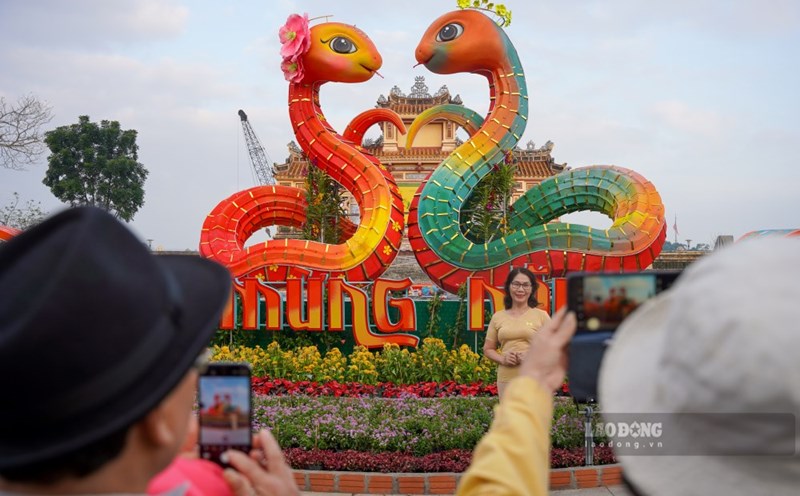Encyclopaedia
According to historical records, the Nine Tripods are nine bronze urns cast by King Minh Mang from 1835 to 1837. These nine bronze urns are very large, averaging 2.3m in height and weighing from 1.9 tons to 2.6 tons. The front of each urn is embossed with the name, year of casting, weight and 17 images arranged in three layers running around the body of each urn.
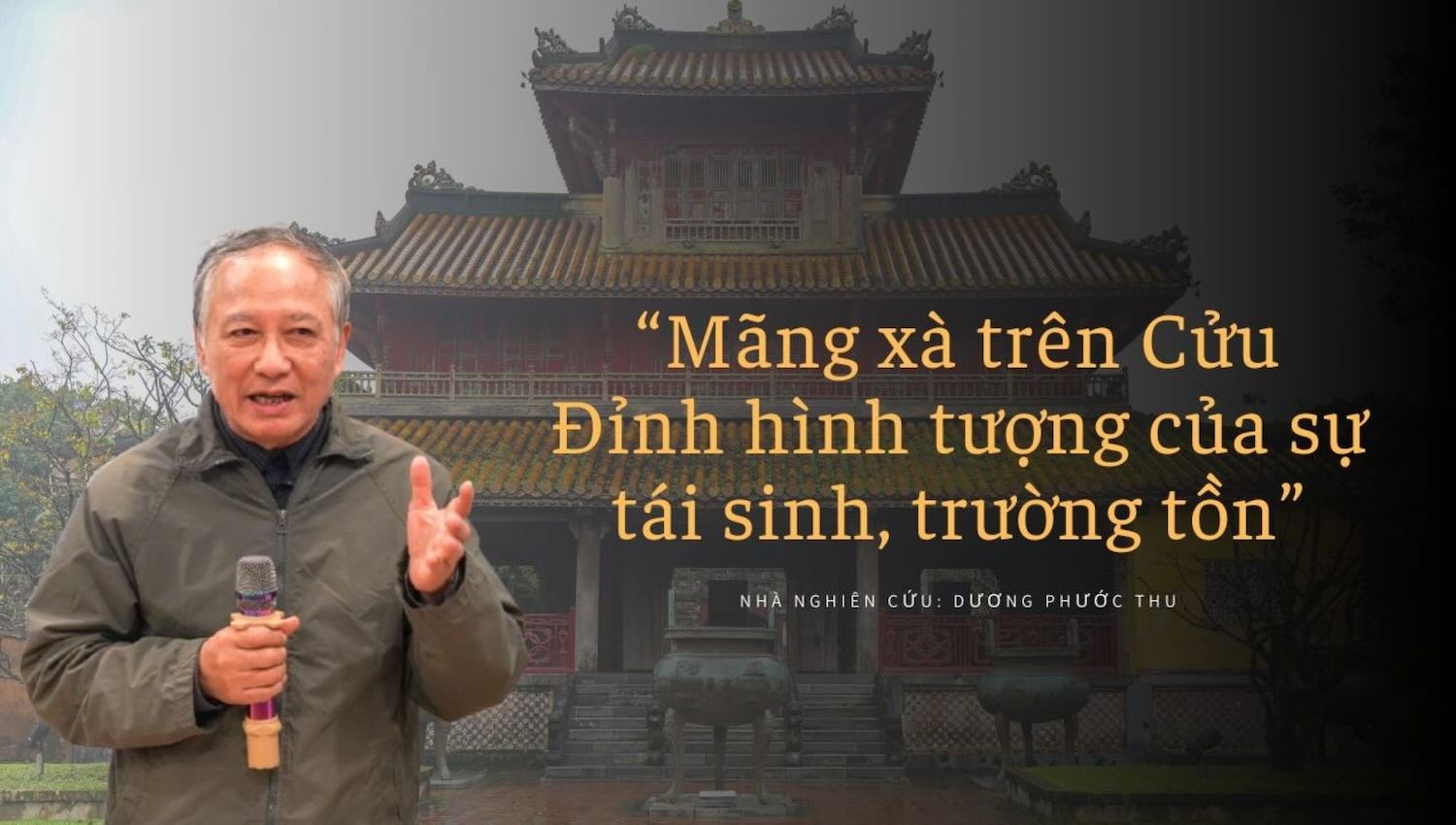
Natural images such as the sun, moon, mountains, rivers, flowers, animals, products, weapons... represent the ancient people's worldview and outlook on life. At the same time, they are historical and legal evidence of the sovereignty of a prosperous and unified country.
All 162 images on the Nine Dynastic Urns are 162 independent carvings, a skillful combination of Vietnamese bronze casting and embossing art; an encyclopedia of Vietnamese people's life in the first half of the 19th century.
According to research, the nine bronze urns are named respectively: Cao Dinh, Nhan Dinh, Chuong Dinh, Anh Dinh, Nghi Dinh, Thuan Dinh, Tuyen Dinh, Du Dinh and Huyen Dinh. The names of the urns are also the temple names of each Nguyen Dynasty king corresponding to the altars in The Mieu.
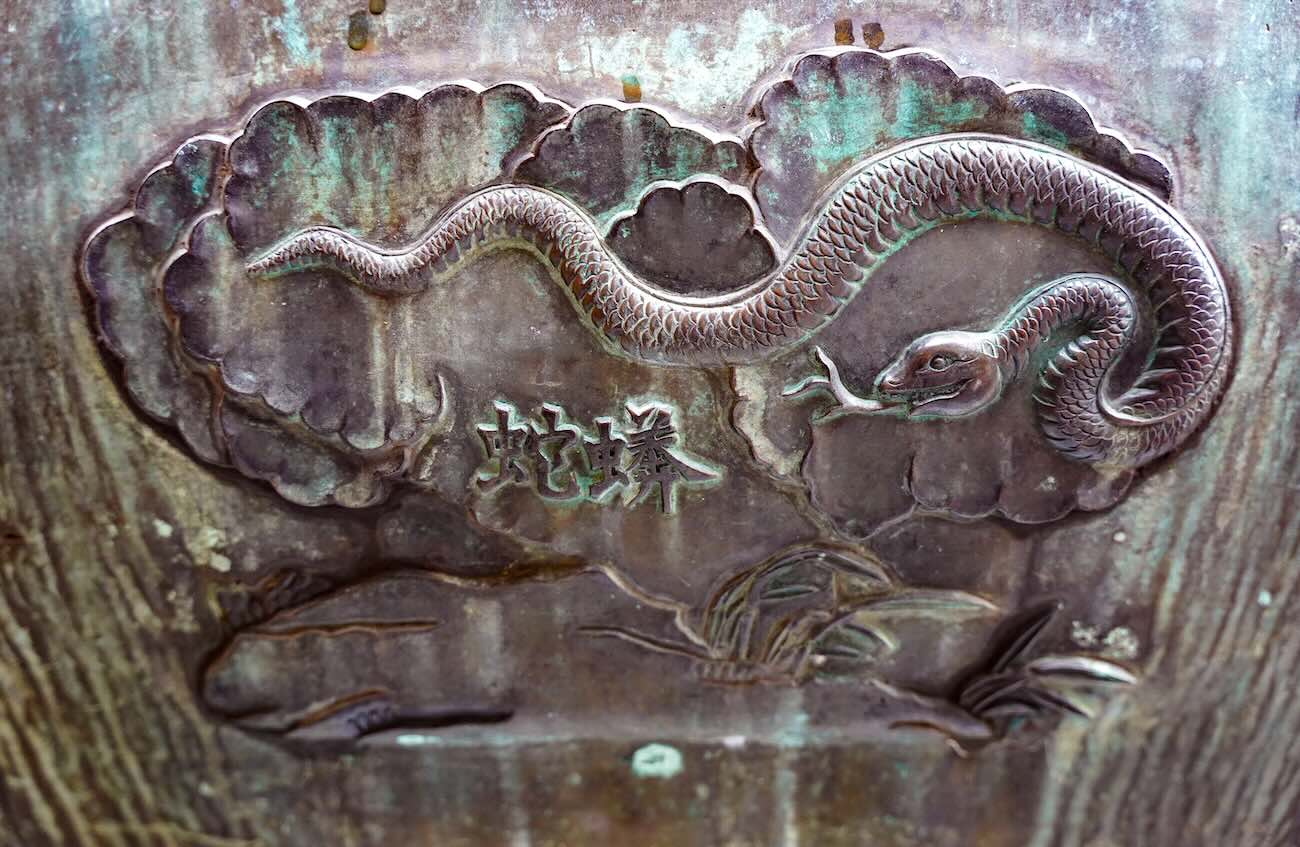
The reliefs on the Nine Dynastic Urns contain typical and unique values in both form and information content. Overall, the Nine Dynastic Urns all have the same shape like a round gourd, with two handles on the mouth and three legs below the gourd. The reliefs on the nine bronze urns in the Hue Imperial Palace are currently the only positive copies that remain intact. They are witnesses to the rise and fall of a dynasty.
Mr. Duong Phuoc Thu - Hue researcher discovered that all types of landscapes carved on the Nine Urns were selected and arranged according to the number 9: including 9 large mountains, 9 rivers, 9 species of birds, 9 mascots... He explained that the ancients considered the number 9 to be the most complete and complete number, and then moving to number 10 would return to the beginning in a new cycle.
In 2012, the Nine Dynastic Urns were recognized as a National Treasure of Vietnam. In May 2024, the reliefs on these nine bronze urns were honored as a world documentary heritage. The Nine Dynastic Urns became the 8th world heritage of the ancient capital of Hue.
Snake King on the Nine Cauldrons
Researcher Duong Phuoc Thu said that in the Nine Tripod Cauldrons, during the reign of King Minh Mang, the council gathered and selected all the country's products and natural mascots associated with people's daily lives. The most typical ones were chosen to represent and show the richness of the country at that time.
“On the Nine Cauldrons, there are crocodiles, pythons, dragons and many other animals, including snakes. The Ministry of Public Works chose the largest snake, the king of snakes, to cast on the side of the Huyen Cauldron (the cauldron corresponding to the temple name of King Duy Tan), said this researcher.
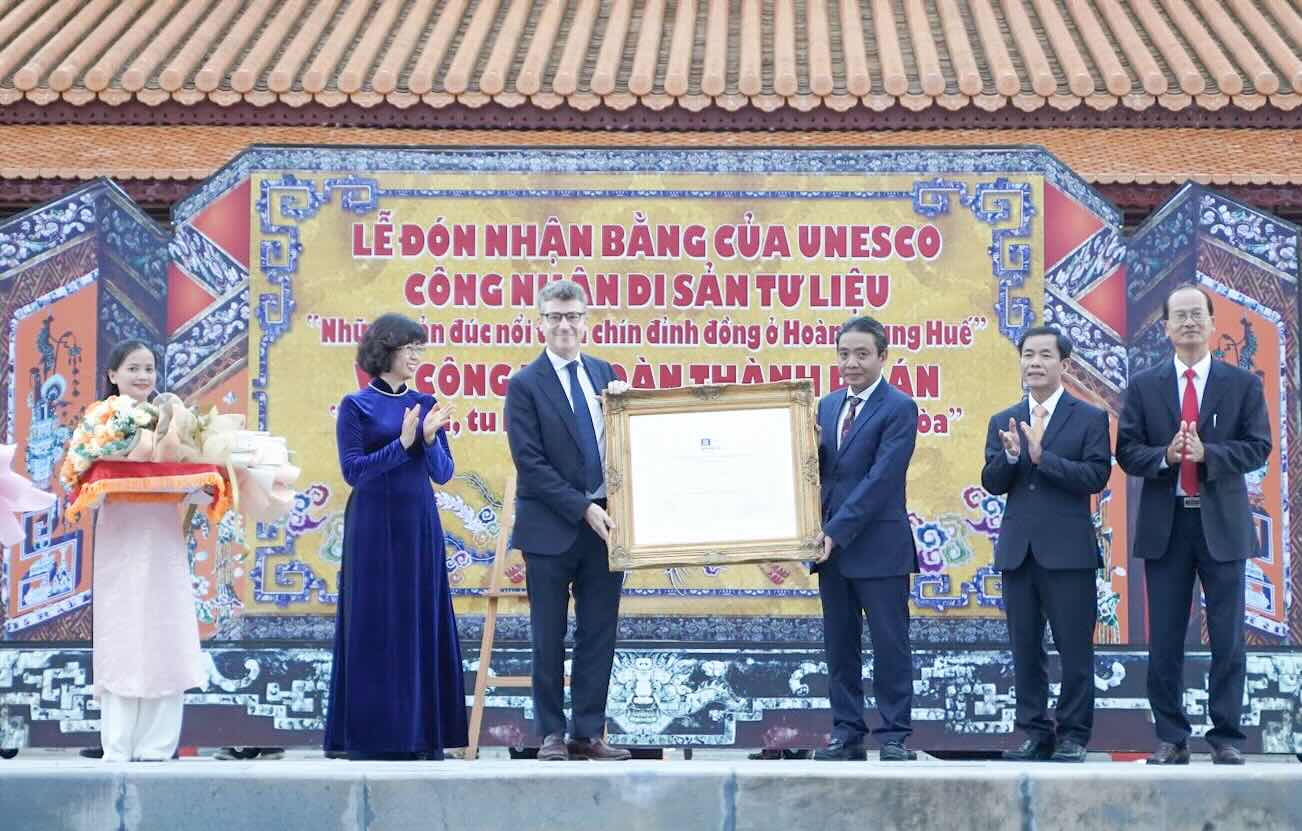
Huyen Dinh was cast in 1835 with a weight of more than 1.9 tons, the image of a python was cast on the 3rd floor of this bronze peak. According to researcher Duong Phuoc Thu, python, which means a large snake, belongs to the scaly family. Many books record it as the king of snakes, according to folk beliefs, snakes are gods (god Lot) in the river region. Python is the largest of all snakes, so it is called king python. This species stays on land in spring and winter, and in summer and autumn, it soaks in water.
In Vietnam, the provinces with semi-mountainous areas, many swamps, and lakes are where pythons often hide. Researcher Duong Phuoc Thu believes that the Nine Cauldrons have two sides, the first represents animals, representing natural reproduction. The second is a spiritual element, the snake symbolizes longevity. Mr. Thu explains that each time the snake sheds its skin, it is a rebirth, representing aspiration, longevity, and innovation and development.
According to Mr. Thu, the snakes on the Nine Cauldrons are very big and long. In real life, they can serve human life: nutritious snake meat can be eaten, snake bones can be cooked into glue and there are even many people who raise snakes as a hobby or for research purposes.
The python on the Nine Cauldrons is not only an image of an animal but also a symbol of power, protection and aura. Snakes, in many cultures, are considered sacred animals with the ability to protect, ward off evil and bring good luck.
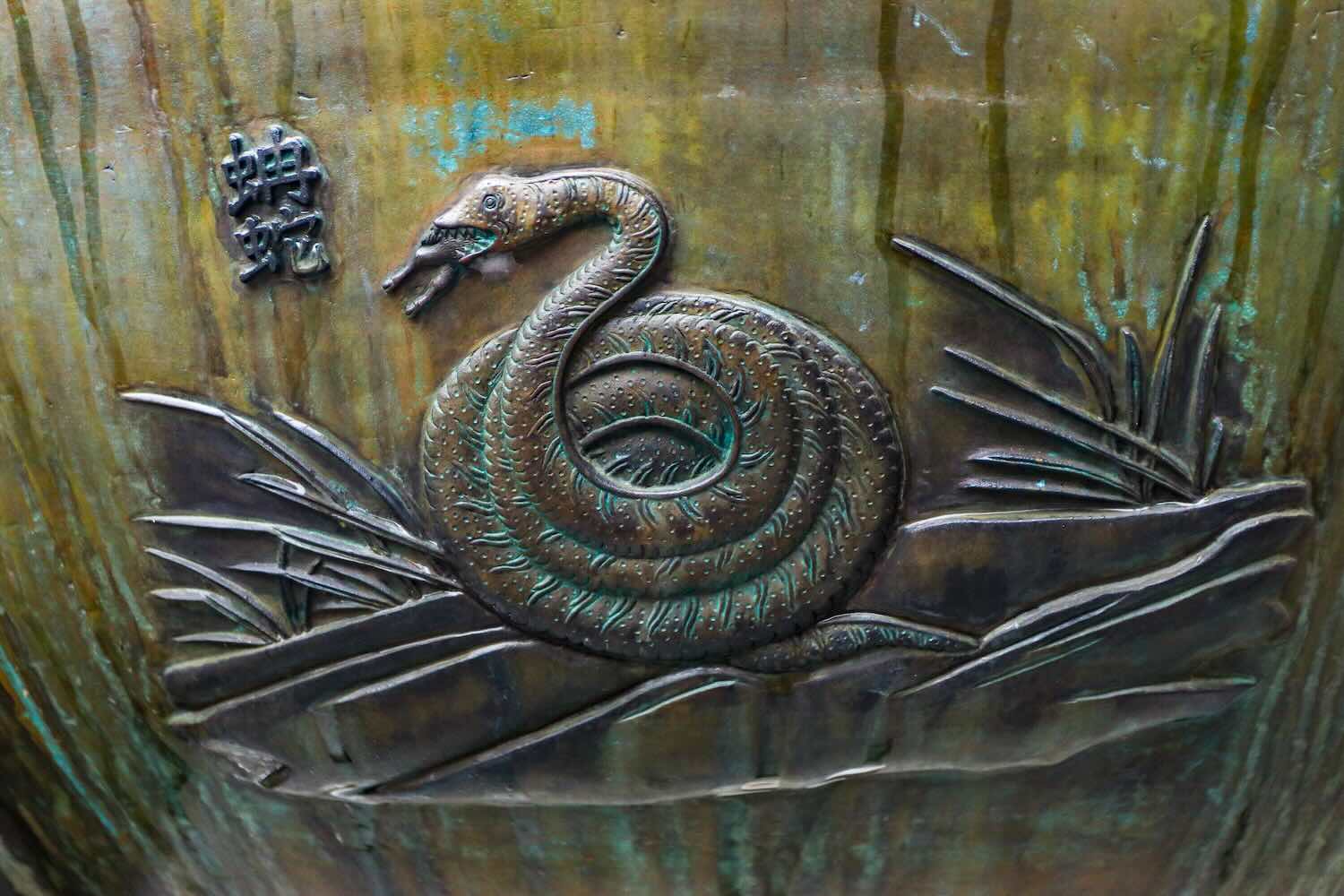
The book “Dai Nam Thuc Luc” recorded: “In 1782, the king arrived in Ha Tien, taking a small boat across the sea. At night, it was so dark that he could not see clearly. There seemed to be something under the boat. At dawn, he looked out and saw that it was a group of snakes. The people following him were all scared. The king urged him to go on, and after a while, the group of snakes disappeared.” This is a story about the years when King Gia Long (King Minh Mang’s father) was being hunted down by the Tay Son army and had to flee to the sea area of Ha Tien - Phu Quoc. While drifting on the sea, it was dark, and suddenly a group of snakes carried the king’s boat across the sea to Ha Tien. Through this, it can be seen that King Minh Mang’s casting of snake statues on the Nine Urns had a profound and realistic meaning.
In general, the image of the python on the Nine Dynastic Urns not only reflects the richness of nature but also carries strong cultural, spiritual and political elements. The python, the king of snakes, not only represents strength and authority but also symbolizes rebirth, longevity, a lasting aspiration in Eastern thinking. This image is closely connected to the spiritual values of the Vietnamese people, where the snake is considered a guardian spirit, bringing peace and luck.
(Posted in the publication of Lao Dong Bac Mien Trung spring At Ty 2025)



